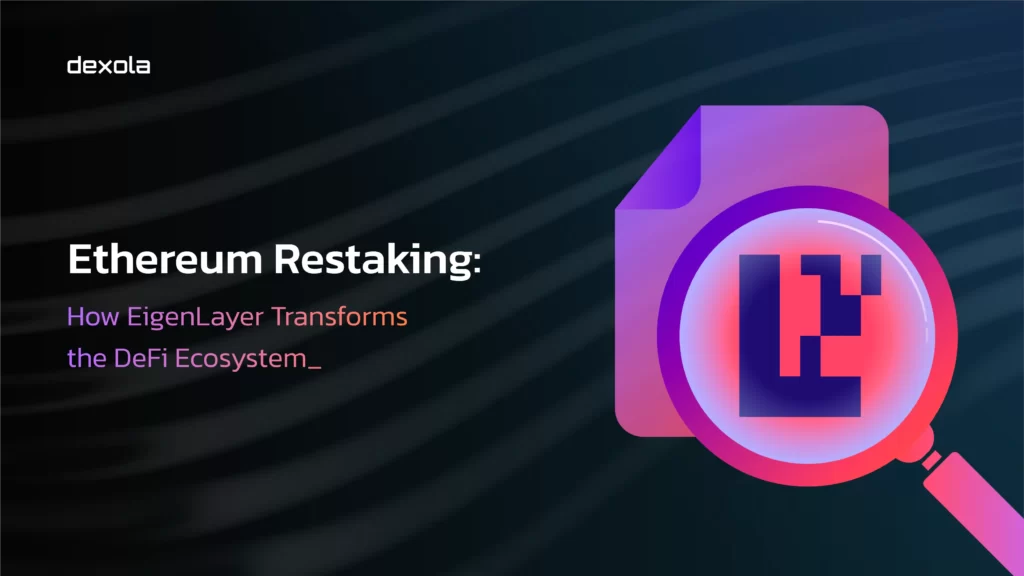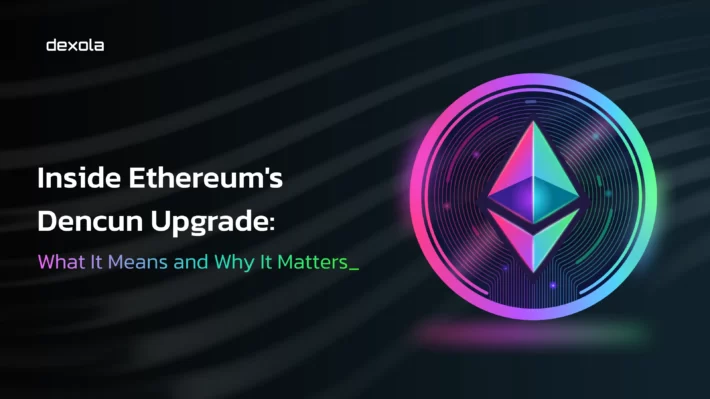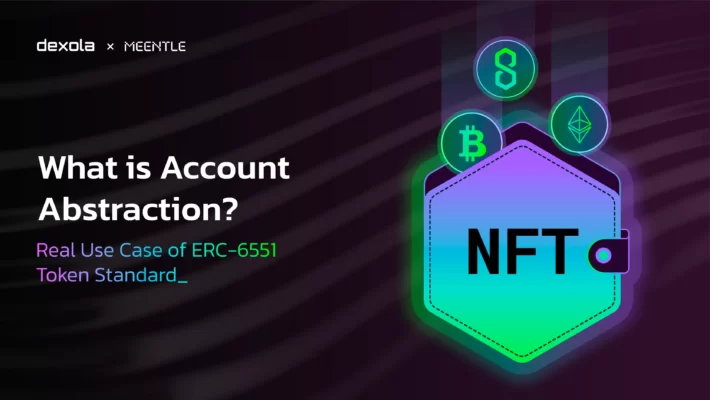Ethereum Restaking: How EigenLayer Transforms the DeFi Ecosystem

The concept of restaking is pretty straightforward: you get the opportunity to stake the same assets in several different projects simultaneously, effectively doubling your potential earnings. It isn’t exactly a groundbreaking idea — restaking made its debut alongside the expansion of decentralized exchanges (DEXes) back in 2018.
In this article, we’re set to unpack the processes of staking and restaking, explore how they benefit the broader cryptocurrency ecosystem, and make some estimations regarding their evolutionary trajectory moving forward.
Discovering the Roots of Restaking
Back in 2018, Uniswap, a pioneering DEX, unveiled its automated market maker (AMM) model along with liquidity pools. For these pools to function, DEX users needed to provide liquidity by sending their tokens to the pool’s smart contract. This enabled other users to exchange one token for another seamlessly.
To facilitate this, DEXes introduced Liquidity Provider tokens (LP tokens). By depositing assets into a liquidity pool, a user received LP tokens, which represented their share of the pool. These tokens could later be returned to the pool to claim their share of the trading fees accumulated. That’s how yields were calculated and distributed.
To encourage more deposits into liquidity pools, DEXes invented farms. Liquidity providers could stake their LP tokens in these farms to earn extra yields, typically in the form of the DEX’s native token or other assets.
Farms were beneficial for both DEXes and liquidity providers. They ensured that liquidity remained within the exchanges while providers enjoyed higher returns on their investments.
This symbiosis of liquidity pools and farms perfectly describes the essential idea of restaking: generating additional returns from a single asset by utilizing it in two or more different initiatives concurrently.
What is Ethereum Restaking?
Ethereum restaking centers around two core activities: initially staking ETH on the Ethereum blockchain, then using that same ETH in a different protocol or project to boost its cryptoeconomic security.
This approach emerged as Ethereum’s developers introduced their staking framework. Initially, ETH placed in staking contracts was completely locked until the Shanghai upgrade in April 2023. This setup was somewhat restrictive and spurred significant debate, leading to the development of liquid staking protocols.
Liquid staking involves securing ETH in specific contracts in return for liquid staking tokens, or LSTs, such as rETH for Rocket Pool and stETH for Lido. These LSTs function similarly to liquidity provider (LP) tokens in decentralized finance (DeFi), symbolizing the owner’s entitlement to swap them back for ETH whenever desired. Like LP tokens, LSTs can also be traded on decentralized exchanges (DEXes), added to liquidity pools to earn additional yield, and bring advantages to their respective projects.
Following these developments, several startup companies have now introduced comprehensive restaking mechanisms, enabling the reuse of previously staked ETH to reinforce the security of another network.
EigenLayer as a Top ETH Restaking Protocol
EigenLayer stands out as the premier protocol for Ethereum restaking, offering a robust suite of smart contracts for both deposits and confirmations, along with node software essential for managing the restaking infrastructure. As of the latest update, EigenLayer boasts a total value locked (TVL) of $11 billion.
EigenLayer supports two restaking modes:
- LST Restaking: This mode allows users to deposit their Ethereum Liquid Staking Tokens (ETH LST) into a pool that integrates with another Proof of Stake (PoS) protocol or decentralized application (dApp) requiring ETH staking. It is a rather simple concept, similar to LP tokens.
- Native ETH Restaking: Here, users can deposit their standard ETH into a specialized EigenPod contract that has been integrated with Ethereum and other protocols. The EigenPod serves as a validator, acquiring validator rights across Ethereum and other PoS networks.
Furthermore, EigenLayer is exploring the addition of two more restaking options: ETH LP restaking and LST LP restaking. These future features would enable the staking of ETH or LSTs previously allocated to liquidity pools within reputable decentralized exchanges (DEXes), lending platforms, and other DeFi projects that generate LP tokens.
Overall, EigenLayer facilitates the versatile use of ETH across multiple platforms simultaneously, enhancing the utility and efficiency of Ethereum staking.
Benefits of Restaking in Web3 Environment
The Web3 landscape, with its multitude of Proof of Stake (PoS) Layer 1 (L1) and Layer 2 (L2) networks built on the Ethereum Virtual Machine (EVM), heavily relies on ETH for staking and ensuring network security. This necessitates a substantial amount of ETH, leading to fragmented liquidity across these platforms.
Restaking enables users to pool the ETH together and secure them all at the same time. While this is already a lot, the advantages extend even further:
- Lowered Capital Costs for Network Security: By allowing current validators to distribute their already-staked ETH across various services, restaking eliminates the need to secure additional capital.
- Enhanced Network Trust and Security: In PoS networks, the amount of value staked is directly proportional to the network’s security and trustworthiness. For instance, while three separate networks might individually secure $1 billion in ETH, using a protocol like EigenLayer to pool $3 billion in ETH across them enhances their collective security, trust, and user appeal.
- Increased Yield Opportunities: While native ETH staking yields range between 3% to 5% APY — a figure mirrored by other EVM-compatible networks — some large holders prefer not to stake but to provide their ETH to more profitable protocols. With restaking, holders can double or triple their yields with almost no additional risk.
- Accelerated Value Growth for New Services: Restaking facilitates quicker access to staked value for emerging services, streamlining their development process.
Moreover, restaking protocols serve as a foundation for a wide array of applications built on top of restaking protocols.
Concluding Thoughts
At Dexola, we confirm that restaking optimizes capital efficiency throughout the Web3 ecosystem, particularly in the crucial area of security.
Through Ethereum restaking, validators have the opportunity to increase their earnings and enhance security without escalating their risk beyond that of traditional staking methods.
At present, EigenLayer stands out as the predominant force in this specialized field. However, as interest grows, we anticipate the emergence of additional restaking platforms to meet the expanding demand.


